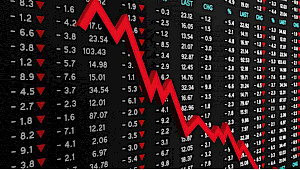Impact investing does social good while making money
September 22, 2021Originally published in The Toronto Star on September 14, 2021 as contributing columnist
“No one has ever become poor by giving.” — Anne Frank
Who wouldn’t want to make money in an investment that also delivers good things? You would have to be heartless to intentionally invest exclusively in businesses that do damage to society or the planet — such as tobacco, fossil fuels or weapons manufacturers. Of course, in the real world, financial returns reign supreme over any other factor that investors weigh in their decision-making process.
The adage “doing well by doing good” has been around for a couple of decades now, and is growing rapidly in popularity. According to the 2020 survey by the Global Impact Investing Network (GIIN), the global impact investing market size is currently $715 billion.
If you’re not already familiar with the term, “impact investing” is basically defined as investments that “do well” and “do good” for society and/or the planet. It’s a vague definition that has been used to cover everything from philanthropic donations with the veneer of a return on investment, to investments with the expectation of high returns and the veneer of social good, and everything in between.
The biggest and most enduring challenge the world faces is poverty. It’s also the one that is most stubbornly difficult to fix. For decades, government and non-government agencies relied on aid as the cure, until it became obvious it was an unsustainable approach that didn’t address the core issues underlying poverty.
I’ve seen a real change in the world of philanthropy over the last 10 or 15 years. Donors want to see results and a return on their giving. They want to see that projects can be sustainable as opposed to being funded continuously year after year. It’s therefore not surprising — and encouraging — that impact investing is becoming more mainstream, driven by increased social consciousness. In the last few years, we’re also seeing more and more international non-profits getting into impact investing, which is a sign that organizations are thinking about the sustainability of their work relative to traditional philanthropic models.
According to a study by GIIN, impact investments have average returns of 5.8 per cent. That’s well below the average return of the S&P 500 of approximately 10 per cent, but deemed adequate for investors willing to sacrifice some financial return in favour of achieving social good.
In 2007, I decided to dedicate my life and a substantial portion of my wealth to developing models aimed at alleviating poverty at scale in a sustainable fashion. Many years later and after many different approaches, our social business builder, Acceso, settled on what we refer to as a farmers services model, which relies heavily on impact investing principles. Addressing poverty by improving the incomes of smallholder farmers (farmers with less than five acres of land) has some challenges that most investors are unaware of and that we have learned by being on the ground and dealing directly with impact investor prospects.
We believe our farmers services model works, but that’s not the point of this article. What is important is a very simple fact: Evidence shows that investment in agriculture is more effective in reducing poverty, particularly amongst the poorest people, than investment in non-agricultural sectors. More than two billion people currently live on about 550 million small farms, with 40 per cent of them on incomes of less than $2 (U.S.) per day. Despite high rates of poverty and malnutrition, these smallholders produce food for more than 50 per cent of the population in low- and middle-income countries. Through Acceso we have seen smallholder farmer income levels increase by two to three times, so one can imagine the immense potential.
Having said that, there are challenges when attempting to address poverty by investing in smallholder farmers. There is a lack of funding for ticket sizes (the amount a single investor will put into a venture) of less than $2 million. Most of the enterprise opportunities we see for individual smallholder farmers groups are just too small for a large impact fund to invest in.
Enterprises tackling development issues and meeting needs at the bottom of the pyramid have greater needs at this lower level. They also tend to be earlier-stage and riskier by nature due to their target populations. Impact investors funding products have not caught up to these needs and these type of investments are not normally available to average investors. Most impact investors operate as a fund, with low management fees permitted by their investors, and/or receive greater profits the less they spend putting together the costs for the deal. The result is they are disincentivized to do small deals.
Despite many investors calling themselves “balanced impact investors,” many are chasing “unicorns” and prioritize financial over social returns. And for those on the receiving end of the investment, it’s a very time-consuming, resource-heavy process. Investees must respond to complex due diligence that is even more complex than a non-social enterprise, as they must also prove impact. The bottom line is that this impact investment sector that is so critical to addressing global poverty is heavily reliant on “catalytic capital” provided by the likes of people like myself, who are willing to de-risk early stage projects that in turn set the stage for impact investors such as the Acumen and Global Partnerships to come in later with additional funding. Think of it as entrepreneurial seed capital that is subsequently followed by venture capital.
The problem is that there aren’t enough social entrepreneurs in the world to make this approach truly scalable. Some possible solutions include financing these smaller deals by pooling impact investors resources and forming consortiums to split costs and share due diligence reports. And we must find ways to lower the barriers to entry for the average investor.
There is also a problem that too many impact investors have predefined expectations of financial return that are too high in the short term. The truth is that impact investment funds are not currently structured to invest in what may be the biggest potential market delivering a crucial social impact. If we truly want to address global poverty, we will need investors who are willing to collaborate with other like-minded investors. We need investors who have adjusted their return expectations when working with vulnerable, low-income populations. And, lastly, we need investors who are flexible, patient and willing to get in early and take risks. With these adjustments, I believe investors can truly have it all, doing both good and well.










